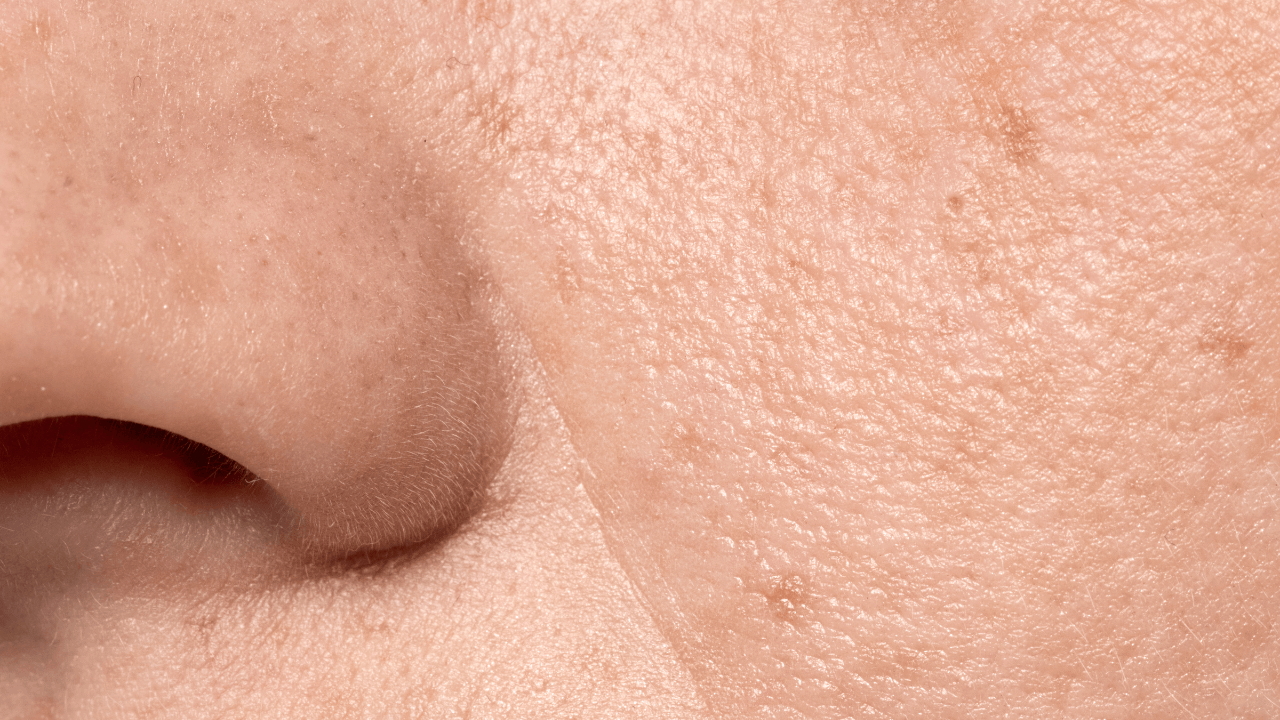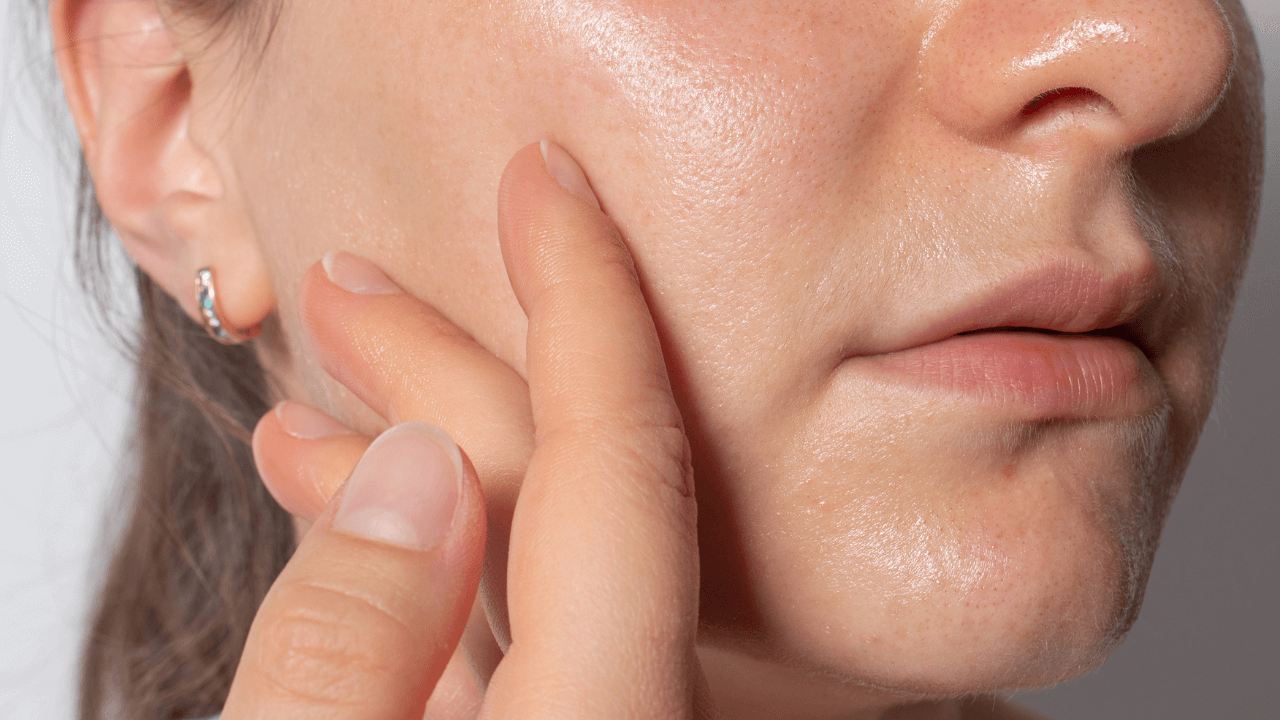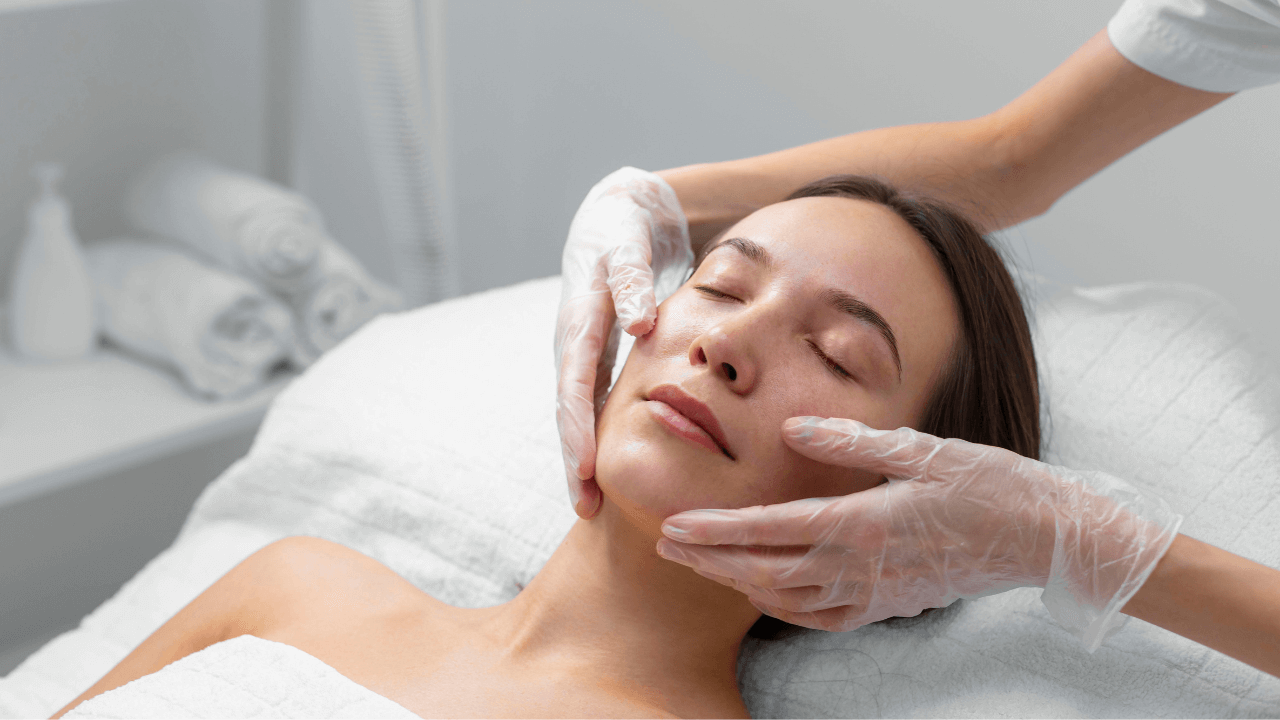What is Papulopustular Rosacea?
Papulopustular rosacea, classified as Subtype 2 rosacea, is a chronic inflammatory skin condition that primarily affects the central areas of the face. This condition manifests as persistent redness accompanied by acne-like breakouts, including small red bumps (papules) and pus-filled lesions (pustules). Despite its resemblance to acne vulgaris, papulopustular rosacea stems from different underlying causes and requires specialized treatment approaches.
The condition affects approximately 16 million Americans, with women being more commonly diagnosed than men, though men often experience more severe symptoms. While papulopustular rosacea can develop at any age, it most frequently appears between ages 30 and 50, and it tends to affect individuals with fair skin more often, particularly those of Northern European descent.
Understanding the Difference Between Papulopustular Rosacea and Acne
Many people mistakenly assume that papulopustular rosacea is simply adult acne, but these conditions differ in several important ways:
|
Papulopustular Rosacea |
Acne Vulgaris |
|
Lacks blackheads and whiteheads |
Commonly features blackheads and whiteheads |
|
Typically appears in middle age |
Most common during adolescence |
|
Accompanied by sensitive, easily irritated skin |
Skin sensitivity varies |
|
Contains pustules primarily on the central face |
It can occur anywhere on the face, chest, and back |
|
Often includes burning or stinging sensations |
Usually involves pain only with larger cysts |
|
Associated with persistent facial redness |
Redness is generally limited to active lesions |
Understanding these distinctions helps dermatologists make accurate diagnoses and recommend appropriate treatments for each condition.

What Causes Papulopustular Rosacea?
The exact cause of papulopustular rosacea remains incompletely understood, but scientific research has identified several key contributing factors:
Inflammatory Response Dysfunction
At the core of papulopustular rosacea lies an abnormal inflammatory response. Research suggests that people with this condition may have an overactive immune system that responds too aggressively to specific triggers. This heightened inflammatory response contributes to the redness, swelling, and formation of papules and pustules.
Vascular Abnormalities
Blood vessel dysfunction plays a significant role in papulopustular rosacea. Individuals with this condition often experience increased blood flow to the facial skin and have blood vessels that dilate too easily. This vascular hyperreactivity contributes to persistent facial redness and flushing episodes.
Demodex Mite Overpopulation
Demodex folliculorum mites, microscopic organisms that naturally inhabit human hair follicles, appear in significantly higher numbers on the skin of people with papulopustular rosacea. These mites may trigger inflammation or serve as carriers for bacteria that exacerbate the condition. Studies have shown that treatments targeting these mites often improve papulopustular rosacea symptoms.
Genetic Predisposition
Family history significantly influences your likelihood of developing papulopustular rosacea. If your parents or siblings have rosacea, your risk increases substantially. This genetic component suggests that inherited factors affect skin barrier function, immune response, and vascular regulation.
Microbial Factors
Research indicates that certain microorganisms, including Bacillus oleronius (a bacterium found in Demodex mites) and Helicobacter pylori (a bacterium associated with gastrointestinal issues), may contribute to the inflammatory response in papulopustular rosacea.
Environmental and Lifestyle Triggers
While not direct causes, numerous factors can trigger or worsen papulopustular rosacea flares:
-
Temperature extremes: Heat (including hot baths and saunas) and cold weather
-
Dietary factors: Spicy foods, alcohol (especially red wine), hot beverages
-
Emotional stress: Both acute stress and chronic anxiety
-
Sun exposure: UV radiation can damage skin and blood vessels
-
Skincare products: Harsh ingredients, fragrances, and alcohol-based products
-
Exercise: Intense physical activity that increases core body temperature
-
Certain medications: Vasodilators, topical steroids, and some blood pressure drugs
Understanding your triggers can significantly improve your ability to manage papulopustular rosacea effectively.
Signs and Symptoms of Papulopustular Rosacea
Papulopustular rosacea manifests through a constellation of symptoms that can vary in severity from person to person. The hallmark features include:
Primary Symptoms
-
Persistent central facial redness (erythema) that resembles a sunburn or blush, primarily affecting the cheeks, nose, chin, and central forehead.
-
Inflammatory papules and pustules that resemble acne but lack comedones (blackheads and whiteheads).
-
Easily flushed skin that reacts quickly to triggers like hot beverages, spicy foods, or emotional stress.
-
Burning or stinging sensations, especially when applying skincare products.
-
Facial edema (swelling), particularly around the cheeks and eyes.
Secondary Symptoms
-
Dry, rough skin texture that may feel like sandpaper.
-
Plaques or raised red patches appearing on the face.
-
Skin thickening (phymatous changes) is more common in Subtype 2 than Subtype 3 rosacea.
-
Ocular symptoms like eye dryness, irritation, and redness may accompany facial symptoms in some patients.
Progression and Patterns
Papulopustular rosacea typically follows a pattern of flares and remissions. Without proper treatment, the condition tends to worsen over time, with:
-
More frequent and intense flare-ups
-
Expansion of affected areas across the face
-
Increased persistence of redness between flares
-
Development of more numerous and inflamed papules and pustules
-
Potentially permanent skin damage and visible blood vessels
Early intervention can significantly slow or prevent this progression, highlighting the importance of prompt diagnosis and treatment.
Diagnosing Papulopustular Rosacea
No specific laboratory test exists for diagnosing papulopustular rosacea. Instead, dermatologists rely on:
Clinical Examination
A dermatologist will scrutinize your skin, looking for the characteristic pattern of redness and acne-like lesions without comedones. They may use a dermatoscope (a specialized magnifying tool) to examine blood vessels and skin features more closely.
Medical History
Your doctor will ask detailed questions about:
-
When symptoms began
-
Pattern of flare-ups
-
Potential triggers
-
Family history of similar conditions
-
Previous treatments tried
-
Associated symptoms (like eye irritation)
Differential Diagnosis
Several skin conditions can mimic papulopustular rosacea, including:
-
Acne vulgaris
-
Seborrheic dermatitis
-
Lupus erythematosus
-
Perioral dermatitis
-
Steroid-induced acne
Your dermatologist will carefully rule out these possibilities before confirming a papulopustular rosacea diagnosis.
Potential Tests
While not routine, your doctor might recommend:
-
Skin scrapings to check for Demodex mite density
-
Skin biopsy in atypical cases
-
Allergy testing is conducted if certain contactants are suspected triggers
Comprehensive Treatment Approaches for Papulopustular Rosacea
While papulopustular rosacea cannot be permanently cured, various treatments can effectively control symptoms and prevent disease progression. A multi-faceted approach typically yields the best results:
Topical Medications
FDA-approved topical treatments for papulopustular rosacea include:
-
Metronidazole (Metrogel®, Metrocream®, Metrolotion®): This antimicrobial agent reduces inflammation and pustules. It is applied twice daily; it typically shows improvement within 3-6 weeks.
-
Azelaic Acid (Finacea®, Azelex®): This multi-action compound reduces inflammation, kills bacteria, and normalizes skin cell turnover. It's particularly effective for patients with both redness and bumps.
-
Ivermectin (Soolantra®): This antiparasitic medication targets Demodex mites and provides anti-inflammatory benefits. Studies show it's highly effective for papulopustular rosacea, with once-daily application.
-
Sodium sulfacetamide-sulfur preparations: These combinations provide antimicrobial and anti-inflammatory effects while helping reduce oiliness.
-
Brimonidine (Mirvaso®) and Oxymetazoline (Rhofade®): While primarily used for the persistent redness of Subtype 1 rosacea, these alpha-adrenergic agonists may be part of a comprehensive approach for patients with multiple rosacea subtypes.
Oral Medications
For moderate to severe papulopustular rosacea, oral treatments may be necessary:
-
Anti-inflammatory dose doxycycline (Oracea®): This low-dose antibiotic (40mg) works primarily through anti-inflammatory mechanisms rather than antimicrobial effects, reducing the risk of antibiotic resistance. It significantly reduces papules and pustules within 3-4 weeks.
-
Other tetracycline antibiotics: Traditional doses of doxycycline, minocycline, or tetracycline may be prescribed for more severe cases.
-
Isotretinoin: In severe, resistant cases, low-dose isotretinoin might be considered. This powerful acne medication is used at much lower doses for rosacea and requires careful monitoring.
Procedural Treatments
Various in-office procedures can address specific aspects of papulopustular rosacea:
-
Vascular lasers and intense pulsed light (IPL): The persistent redness and visible blood vessels often accompany papulopustular lesions.
-
Photodynamic therapy: Combining a photosensitizing agent and light source may help reduce inflammation and target abnormal blood vessels.
-
Microneedling: Some evidence suggests that controlled skin injury through microneedling may help reduce inflammation and improve skin texture in rosacea patients.
Skincare Recommendations
A gentle, consistent skincare routine is essential for papulopustular rosacea management:
-
Cleansers: Use lukewarm (never hot) water and mild, non-foaming, fragrance-free cleansers. Consider cleansers containing ceramides or other barrier-supporting ingredients.
-
Moisturizers: Apply non-comedogenic, fragrance-free moisturizers containing ingredients like ceramides, niacinamide, or hyaluronic acid to support skin barrier function.
-
Sun protection: Use a broad-spectrum, mineral-based sunscreen with SPF 30+ daily. Look for formulations with zinc oxide or titanium dioxide, which are less likely to irritate sensitive skin.
-
Makeup: Mineral-based foundations and concealers with a green tint can help neutralize redness without irritating the skin.
Living with Papulopustular Rosacea: Management Strategies
Beyond medical treatments, lifestyle modifications play a crucial role in managing papulopustular rosacea:
Trigger Identification and Avoidance
A detailed diary of activities, foods, environmental factors, and subsequent flare-ups can help identify your triggers. Common triggers include:
-
Dietary factors: Spicy foods, hot beverages, alcohol (especially red wine), cinnamaldehyde-containing foods (cinnamon, chocolate, tomatoes)
-
Environmental factors: Extreme temperatures, humidity, wind, sun exposure, pollution
-
Emotional factors: Stress, anxiety, embarrassment
-
Physical factors: Intense exercise, hot baths/showers, saunas
-
Skincare ingredients: Alcohol, fragrances, essential oils, certain preservatives, exfoliating acids
Once identified, developing strategies to avoid or minimize exposure to these triggers can significantly reduce flare frequency and severity.
Stress Management Techniques
Given the strong connection between emotional stress and rosacea flares, incorporating stress reduction practices can be beneficial:
-
Regular meditation or mindfulness practice
-
Progressive muscle relaxation
-
Deep breathing exercises
-
Adequate sleep hygiene
-
Physical activities like yoga or tai chi
-
Professional counseling when needed
Dietary Considerations
While dietary triggers vary between individuals, some general recommendations include:
-
Eating smaller, more frequent meals to avoid the facial flushing associated with large meals
-
Allowing hot foods and beverages to cool slightly before consumption
-
Limiting alcohol consumption, particularly red wine
-
Increasing anti-inflammatory foods like fatty fish, olive oil, nuts, and colorful fruits and vegetables
Environmental Modifications
Simple changes to your environment can help minimize triggers:
-
Using air conditioning during hot weather
-
Protecting your face with a scarf in cold, windy conditions
-
Installing air purifiers if pollution triggers your symptoms
-
Maintaining moderate humidity levels in your home
Special Considerations for Papulopustular Rosacea
Pregnancy and Rosacea
Pregnancy can significantly impact papulopustular rosacea, with some women experiencing improvement while others notice worsening symptoms due to hormonal fluctuations. Many standard treatments (including oral antibiotics and isotretinoin) are contraindicated during pregnancy, making management challenging. Work closely with your dermatologist and obstetrician to develop a pregnancy-safe treatment plan.
Psychological Impact
The visible nature of facial rosacea can significantly affect psychological well-being. Studies show that individuals with rosacea have higher rates of:
-
Social anxiety
-
Embarrassment
-
Reduced self-esteem
-
Depression
-
Reduced quality of life
These psychological effects should not be underestimated. Consider joining support groups, seeking counseling, and discussing the emotional impact with your healthcare provider.
Rosacea in Skin of Color
While papulopustular rosacea is most commonly diagnosed in fair-skinned individuals, it does occur in people with deeper skin tones. In darker skin, the condition may:
-
Present with less noticeable redness
-
Show more pronounced papules and pustules
-
Be frequently misdiagnosed as acne or other conditions
-
Result in post-inflammatory hyperpigmentation
Seeking care from a dermatologist experienced in treating diverse skin types can help ensure accurate diagnosis and appropriate treatment.
Frequently Asked Questions About Papulopustular Rosacea
Q: Is papulopustular rosacea contagious? A: No, rosacea is not contagious in any way. You cannot spread it to others through physical contact, sharing items, or other means. It is an inflammatory condition related to internal factors rather than an infection that can be transmitted.
Q: Will papulopustular rosacea go away on its own? A: Unfortunately, without treatment, rosacea typically persists and may gradually worsen over time. While spontaneous remissions can occur, they're uncommon. Most people require ongoing management to control symptoms.
Q: Can diet changes cure my rosacea? A: While dietary modifications can help manage triggers and reduce flare frequency, there is no evidence that diet alone can cure rosacea. Dietary changes work best as part of a comprehensive treatment plan that includes appropriate medications and skincare.
Q: Does papulopustular rosacea leave scars? A: Unlike severe acne, papulopustular rosacea rarely causes significant scarring. However, without treatment, long-term inflammation can lead to permanent redness, visible blood vessels, and skin thickening in some cases.
Q: Can children develop papulopustular rosacea? A: While rare, rosacea can affect children. When it occurs in pediatric populations, it's often misdiagnosed as acne, eczema, or other conditions. Children with persistent facial redness and bumps should be evaluated by a dermatologist, especially if there's a family history of rosacea.
Q: Is rosacea related to digestive problems? A: Some research suggests connections between rosacea and gastrointestinal conditions like small intestinal bacterial overgrowth (SIBO) and Helicobacter pylori infection. While treating these conditions sometimes improves rosacea symptoms, the relationship is not fully understood and varies between individuals.
Related Conditions and Rosacea Subtypes
Understanding the relationship between papulopustular rosacea and other conditions can help with comprehensive management:
Other Rosacea Subtypes
-
Erythematotelangiectatic Rosacea (Subtype 1): Characterized by persistent facial redness, flushing, and visible blood vessels without significant bumps or pustules. Many patients have features of both Subtype 1 and Subtype 2.
-
Phymatous Rosacea (Subtype 3): Involves skin thickening and irregular surface nodularities, most commonly affecting the nose (rhinophyma). This subtype more frequently affects men.
-
Ocular Rosacea (Subtype 4): Affects the eyes and can cause dryness, irritation, redness, and sometimes more serious complications. About 50% of people with facial rosacea also experience ocular symptoms.
Conditions That May Coexist With Papulopustular Rosacea
-
Seborrheic Dermatitis: This inflammatory condition causes flaky, red patches in areas with many oil glands. It frequently coexists with rosacea (sometimes called "seborrheic rosacea").
-
Allergic Contact Dermatitis: People with rosacea have compromised skin barriers, making them more susceptible to irritants and allergens.
-
Migraines: Research has identified associations between rosacea and migraine headaches, possibly due to shared vascular and inflammatory pathways.
-
Autoimmune Conditions: Some studies suggest links between rosacea and autoimmune disorders like multiple sclerosis, rheumatoid arthritis, and type 1 diabetes.
Recent Advances in Papulopustular Rosacea Research
The field of rosacea treatment continues to evolve, with several promising developments:
-
Microbiome-based therapies: Emerging research focuses on restoring healthy skin microbial balance to reduce inflammation.
-
Novel anti-inflammatory compounds: New topical and oral medications targeting specific inflammatory pathways are being developed.
-
Advanced barrier repair technologies: Innovative skincare formulations focus on restoring rosacea patients' compromised skin barrier function.
-
Targeted light therapies: Next-generation devices offer more precise treatment of vascular and inflammatory components of rosacea, in addition to their effects.
-
Genetic research: Studies identifying specific genetic markers may eventually lead to more personalized treatment approaches.
Conclusion: Living Well with Papulopustular Rosacea
Papulopustular rosacea is a chronic condition requiring ongoing attention, but with proper treatment and management, most people achieve significant symptom improvement and prevent disease progression. The key to success lies in:
-
Early diagnosis and treatment to prevent worsening of the condition
-
Consistent use of prescribed medications, even when symptoms improve
-
Development of a gentle, appropriate skincare routine
-
Identification and avoidance of personal triggers
-
Regular follow-up with your dermatologist to adjust treatments as needed
Remember that treatment response varies between individuals, and finding the right combination of approaches may take time. Be patient with the process and maintain open communication with your healthcare provider about your concerns and goals.
With today's advanced treatment options and a comprehensive management approach, people with papulopustular rosacea can enjoy clear, comfortable skin and improved quality of life.
Disclaimer: This information is provided for educational purposes only and is not intended to replace professional medical advice. Always consult with a qualified healthcare provider regarding any skin concerns or conditions.






